Classical Theories of International Trade Lecture 3

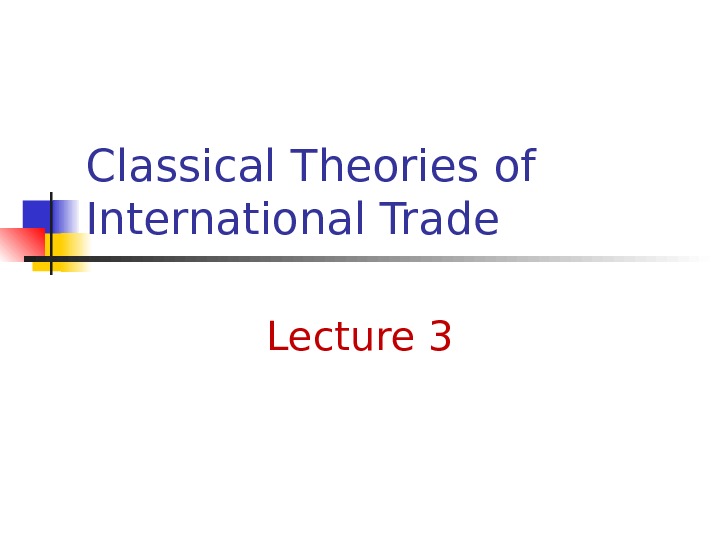
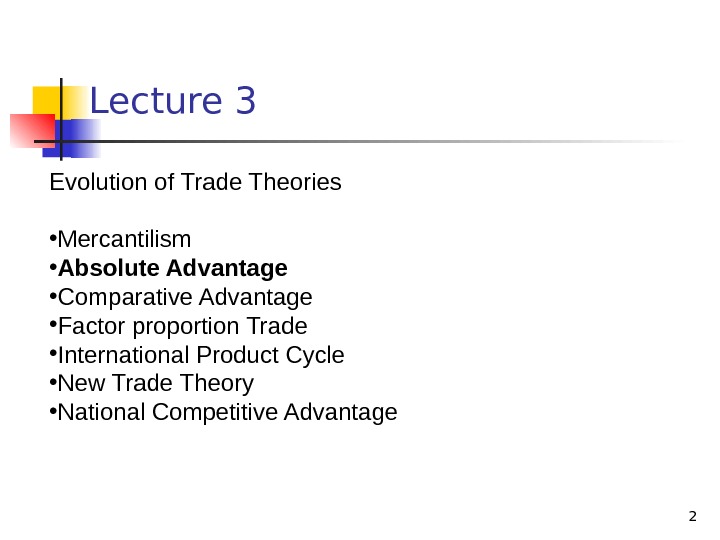
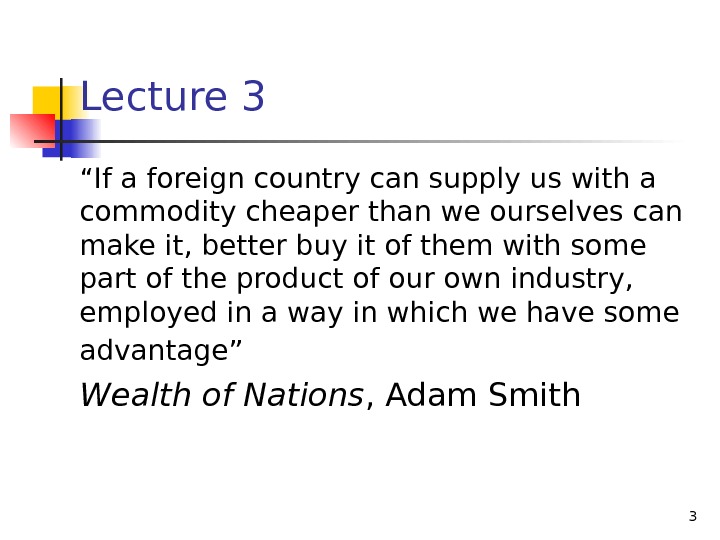

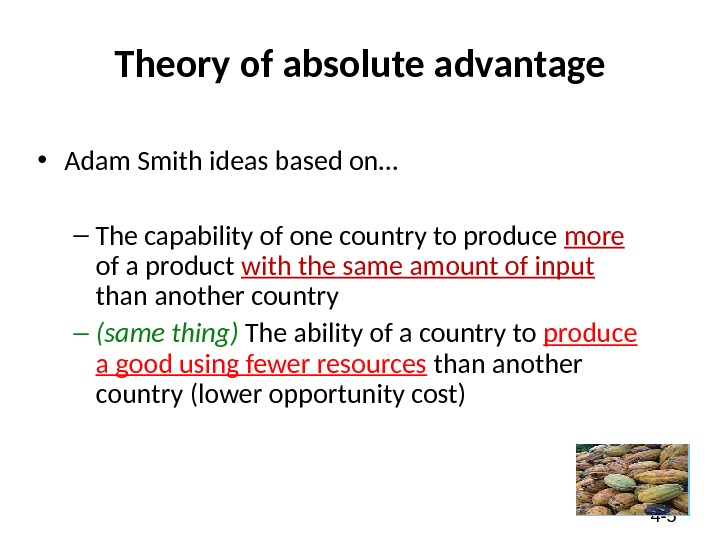

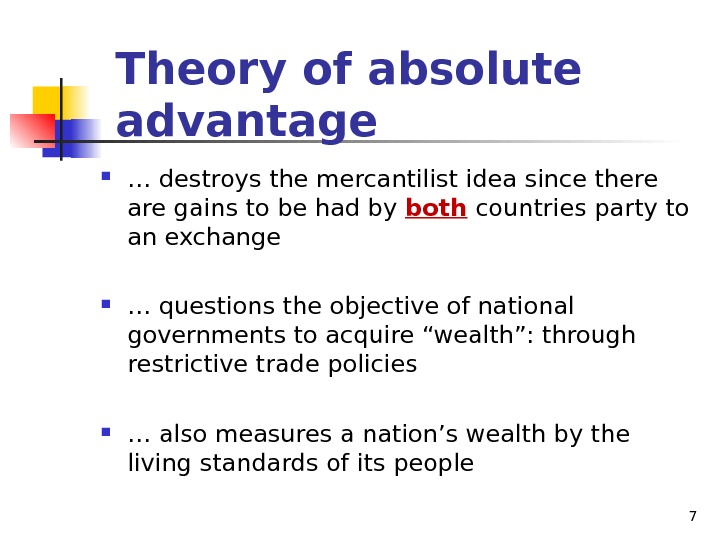



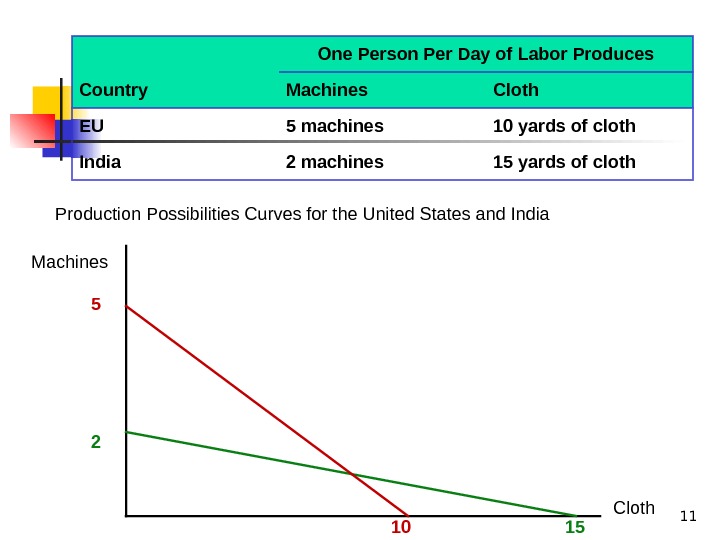

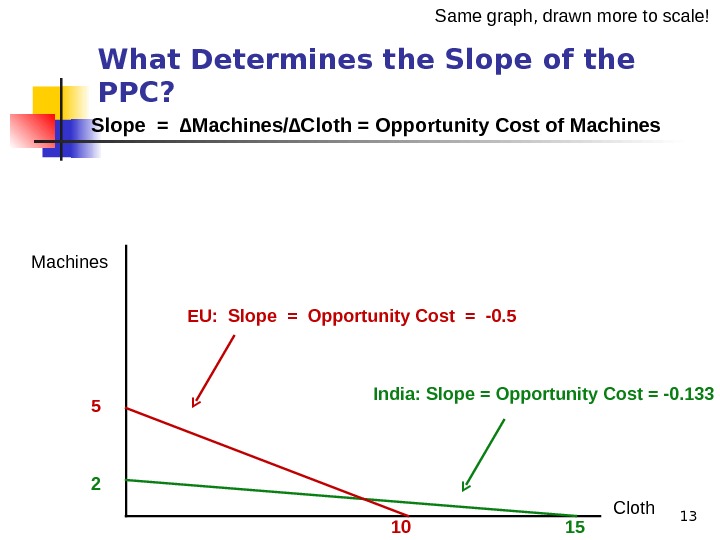

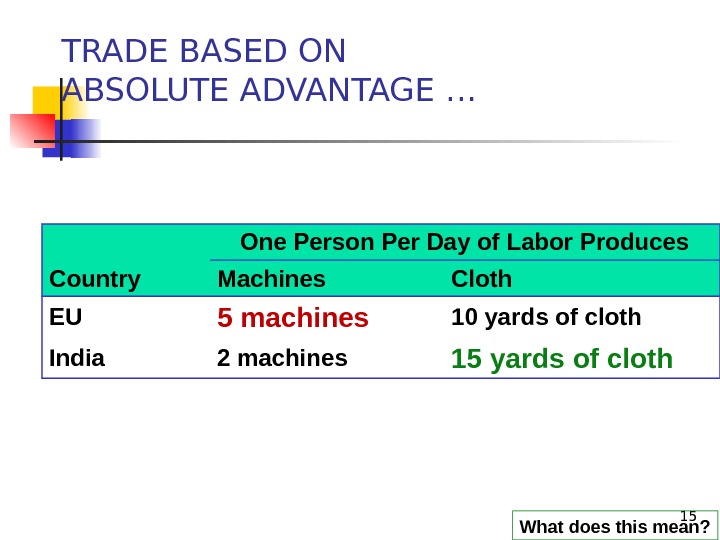
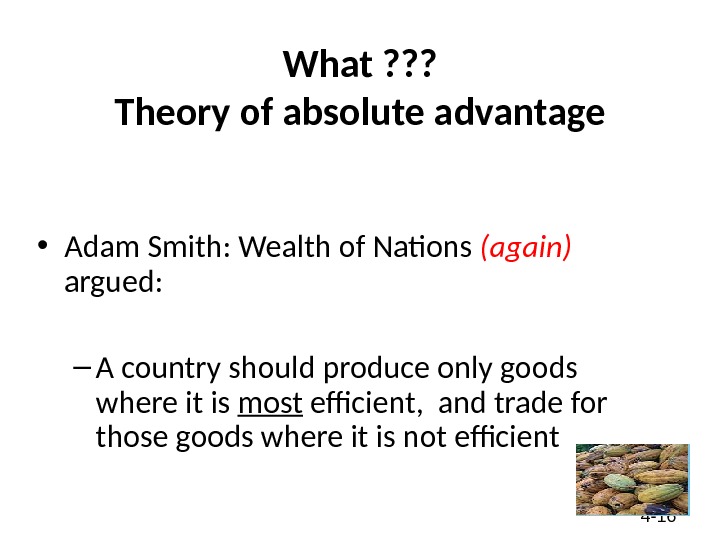
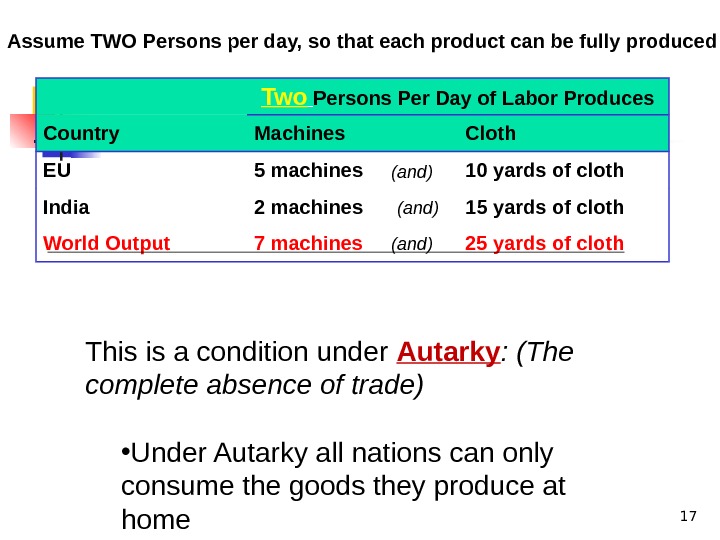
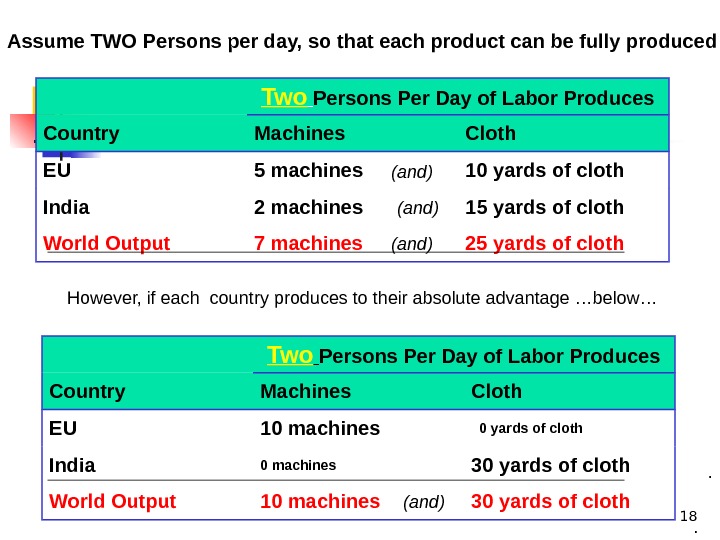
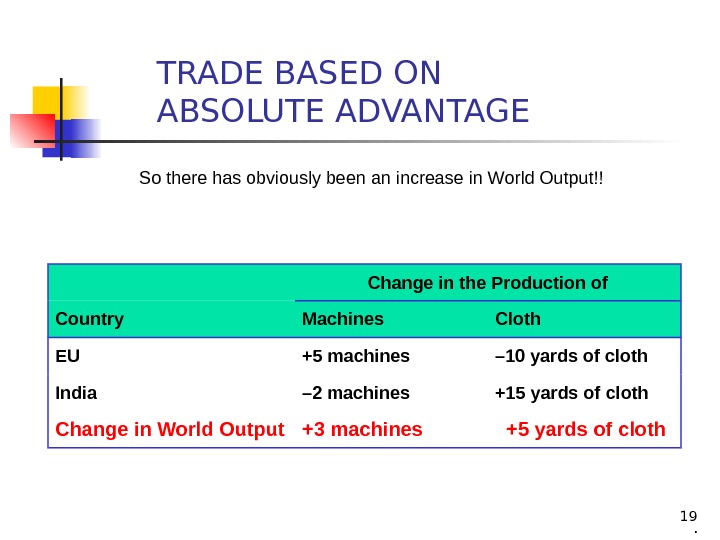

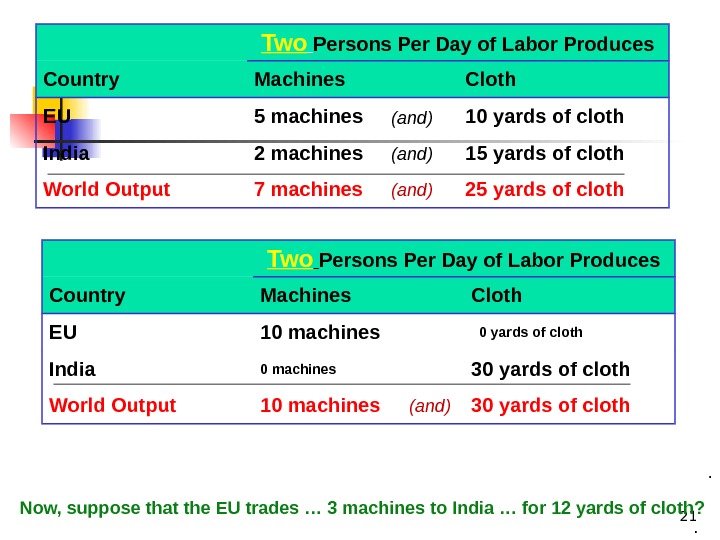


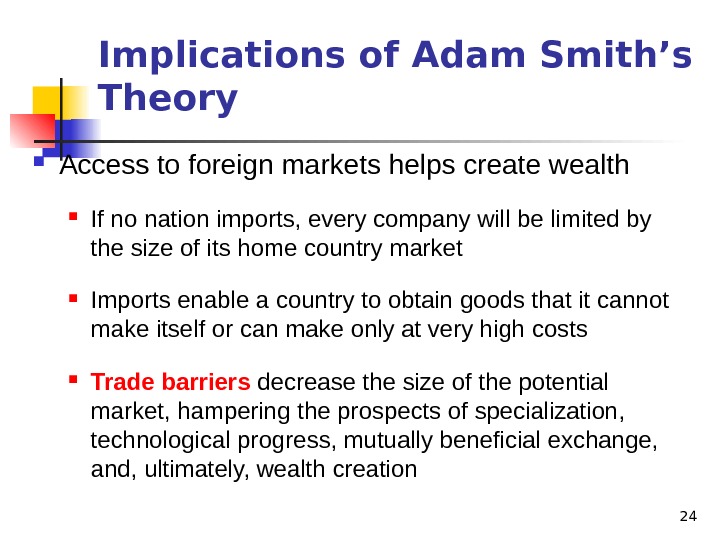
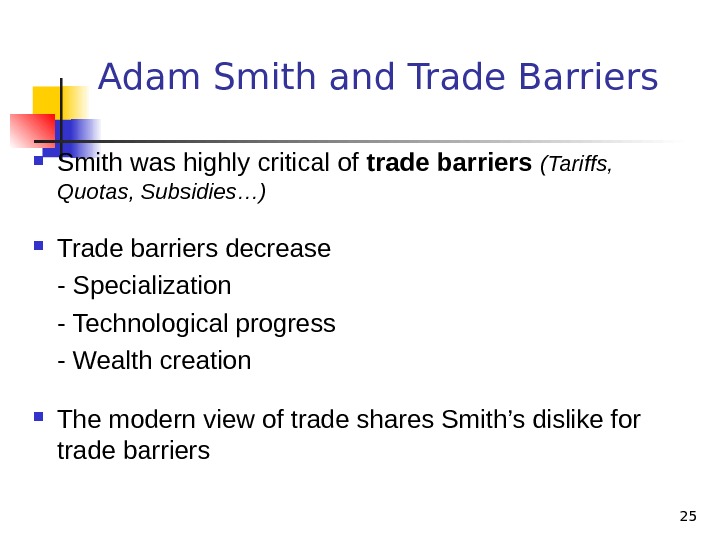
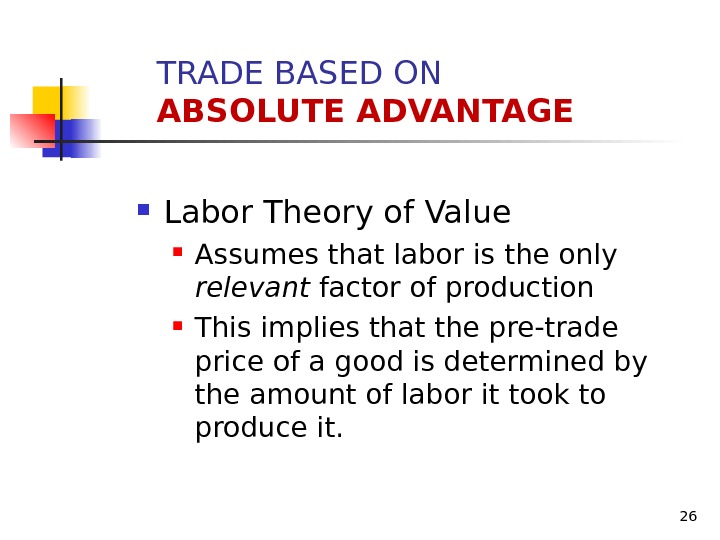
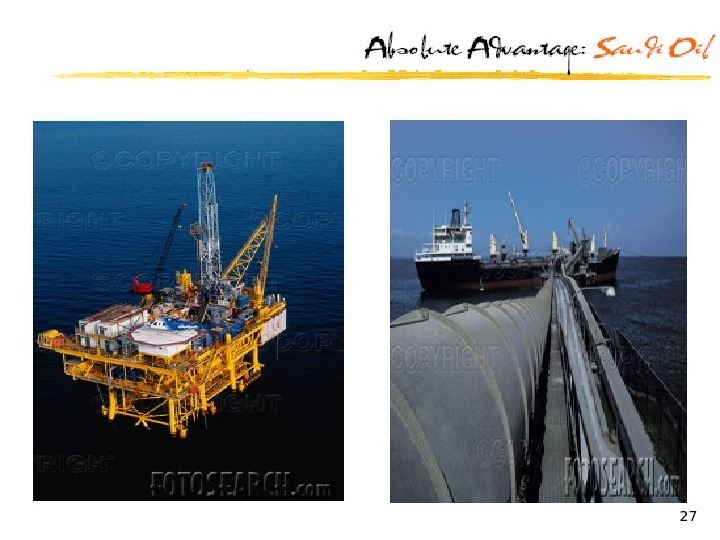
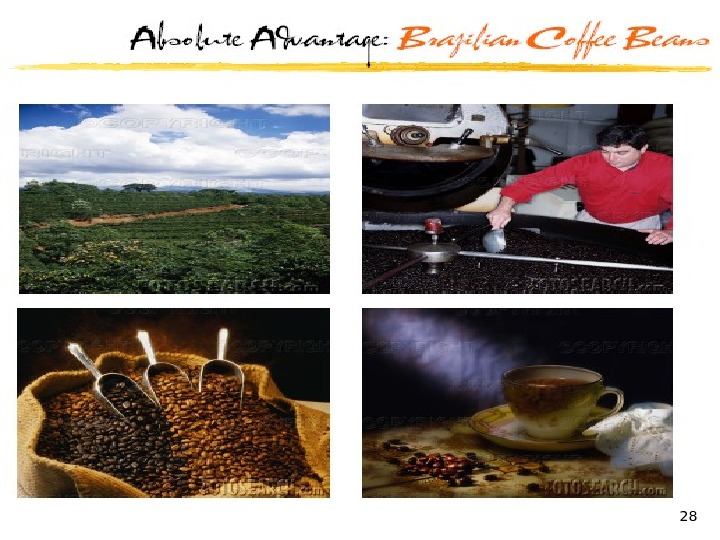
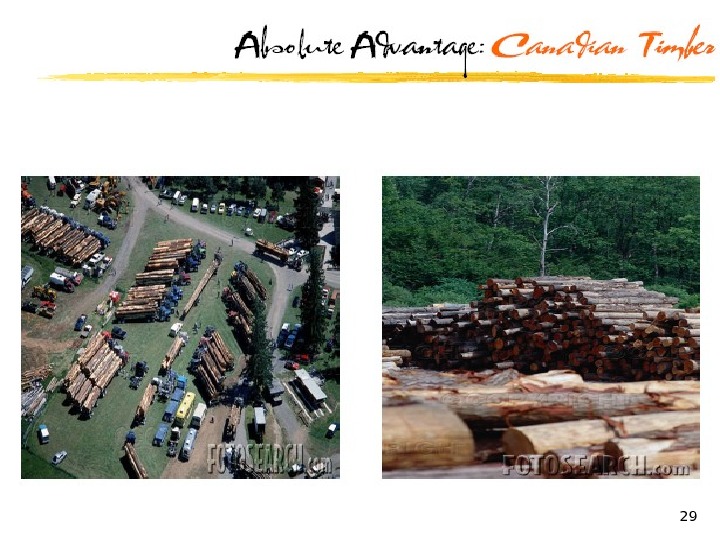
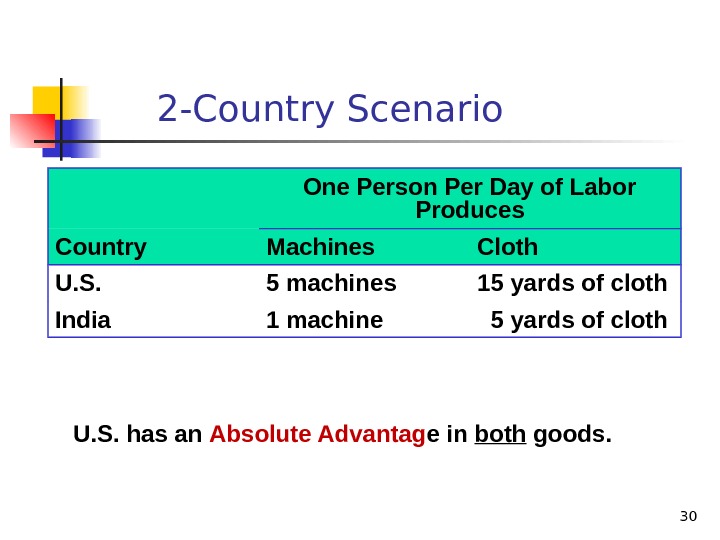
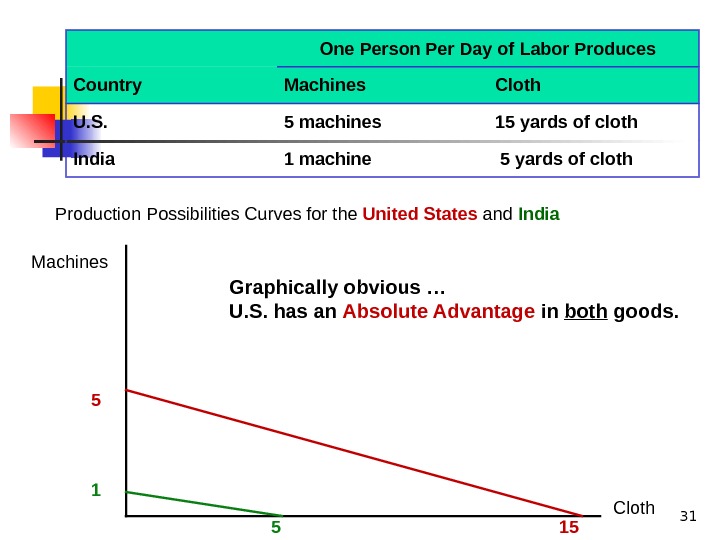
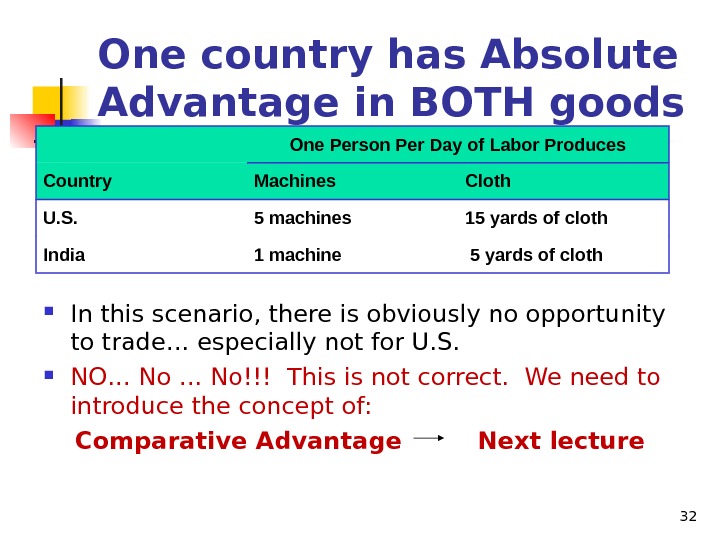
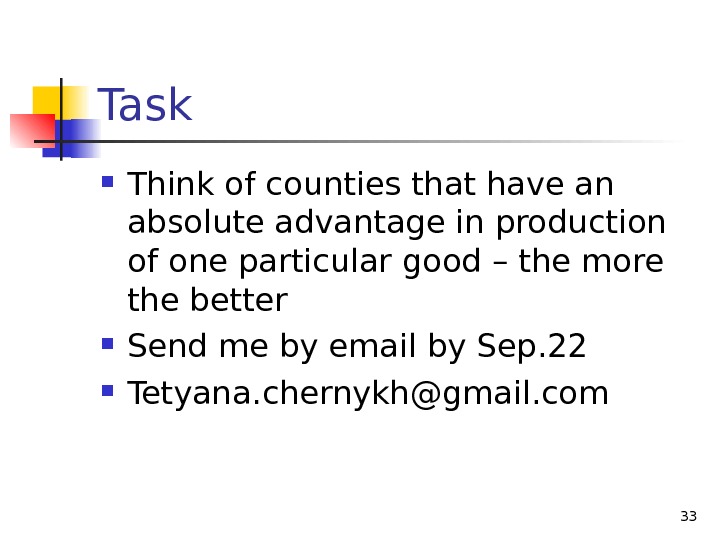
class_th_of_int_trade_-_lecture_3.ppt
- Размер: 1.9 Mегабайта
- Количество слайдов: 33
Описание презентации Classical Theories of International Trade Lecture 3 по слайдам
 Classical Theories of International Trade Lecture
Classical Theories of International Trade Lecture
 2 Lecture 3 Evolution of Trade Theories • Mercantilism • Absolute Advantage • Comparative Advantage • Factor proportion Trade • International Product Cycle • New Trade Theory • National Competitive Advantage
2 Lecture 3 Evolution of Trade Theories • Mercantilism • Absolute Advantage • Comparative Advantage • Factor proportion Trade • International Product Cycle • New Trade Theory • National Competitive Advantage
 3 Lecture 3 “ If a foreign country can supply us with a commodity cheaper than we ourselves can make it, better buy it of them with some part of the product of our own industry, employed in a way in which we have some advantage” Wealth of Nations , Adam Smith
3 Lecture 3 “ If a foreign country can supply us with a commodity cheaper than we ourselves can make it, better buy it of them with some part of the product of our own industry, employed in a way in which we have some advantage” Wealth of Nations , Adam Smith
 4 Adam Smith and the Attack on Mercantilism and Economic Nationalism In 1776, Adam Smith published the first modern statement of economic theory, An Inquiry into the Nature and Causes of the Wealth of Nations The Wealth of Nations attacked mercantilism —the system of which dominated economic thought in the 1700 s Smith proved wrong the belief that trade was a zero sum game —that the gain of one nation from trade was the loss of another On the other hand… Voluntary exchange (trade) is a positive sum game —both nations can gain
4 Adam Smith and the Attack on Mercantilism and Economic Nationalism In 1776, Adam Smith published the first modern statement of economic theory, An Inquiry into the Nature and Causes of the Wealth of Nations The Wealth of Nations attacked mercantilism —the system of which dominated economic thought in the 1700 s Smith proved wrong the belief that trade was a zero sum game —that the gain of one nation from trade was the loss of another On the other hand… Voluntary exchange (trade) is a positive sum game —both nations can gain
 4 — 5 Theory of absolute advantage • Adam Smith ideas based on… – The capability of one country to produce more of a product with the same amount of input than another country – (same thing) The ability of a country to produce a good using fewer resources than another country (lower opportunity cost)
4 — 5 Theory of absolute advantage • Adam Smith ideas based on… – The capability of one country to produce more of a product with the same amount of input than another country – (same thing) The ability of a country to produce a good using fewer resources than another country (lower opportunity cost)
 4 — 6 Theory of absolute advantage • Adam Smith argued: – A country should produce only goods where it is most efficient …. and trade for those goods where it is not efficient • Trade between countries is, therefore, beneficial
4 — 6 Theory of absolute advantage • Adam Smith argued: – A country should produce only goods where it is most efficient …. and trade for those goods where it is not efficient • Trade between countries is, therefore, beneficial
 7 Theory of absolute advantage … destroys the mercantilist idea since there are gains to be had by both countries party to an exchange … questions the objective of national governments to acquire “wealth”: through restrictive trade policies … also measures a nation’s wealth by the living standards of its people
7 Theory of absolute advantage … destroys the mercantilist idea since there are gains to be had by both countries party to an exchange … questions the objective of national governments to acquire “wealth”: through restrictive trade policies … also measures a nation’s wealth by the living standards of its people
 8 Consider this “simple” example involving the EU and India Only two products are produced, machines and cloth Labo r is fixed, homogeneous within a country, the only factor of production, and is fully utilized Technology and production costs are constant Transportation costs are zero and the countries barter (trade) for goods TRADE BASED ON ABSOLUTE ADVANTAG
8 Consider this “simple” example involving the EU and India Only two products are produced, machines and cloth Labo r is fixed, homogeneous within a country, the only factor of production, and is fully utilized Technology and production costs are constant Transportation costs are zero and the countries barter (trade) for goods TRADE BASED ON ABSOLUTE ADVANTAG
 9 TRADE BASED ON ABSOLUTE ADVANTAGE One Person Per Day of Labor Produces Country Machines Cloth EU 5 machines 10 yards of cloth India 2 machines 15 yards of cloth
9 TRADE BASED ON ABSOLUTE ADVANTAGE One Person Per Day of Labor Produces Country Machines Cloth EU 5 machines 10 yards of cloth India 2 machines 15 yards of cloth
 10 The Production Possibilities Frontier (PPF) is a curve showing the various combinations of two goods that a country can produce when all of a country’s resources are fully employed and used in their most efficient manner. THE PRODUCTION POSSIBILITIES FRONTIER AND CONSTANT COSTS One Person Per Day of Labor Produces Country Machines Cloth EU 5 machines 10 yards of cloth India 2 machines 15 yards of cloth
10 The Production Possibilities Frontier (PPF) is a curve showing the various combinations of two goods that a country can produce when all of a country’s resources are fully employed and used in their most efficient manner. THE PRODUCTION POSSIBILITIES FRONTIER AND CONSTANT COSTS One Person Per Day of Labor Produces Country Machines Cloth EU 5 machines 10 yards of cloth India 2 machines 15 yards of cloth
 11 Production Possibilities Curves for the United States and India One Person Per Day of Labor Produces Country Machines Cloth EU 5 machines 10 yards of cloth India 2 machines 15 yards of cloth Machines Cloth
11 Production Possibilities Curves for the United States and India One Person Per Day of Labor Produces Country Machines Cloth EU 5 machines 10 yards of cloth India 2 machines 15 yards of cloth Machines Cloth
 12 India Cloth Mach 15 0 7. 5 1 0 2 EU Cloth Mach 10 0 8 1 6 2 4 3 2 4 0 5 India — Opportunity Costs Machine = 7. 5 cloth Cloth = 0. 133 machine EU — Opportunity Costs Machine = 2 cloth Cloth = 0. 5 machine“ Opportunity Cost” also known as “Relative Price”
12 India Cloth Mach 15 0 7. 5 1 0 2 EU Cloth Mach 10 0 8 1 6 2 4 3 2 4 0 5 India — Opportunity Costs Machine = 7. 5 cloth Cloth = 0. 133 machine EU — Opportunity Costs Machine = 2 cloth Cloth = 0. 5 machine“ Opportunity Cost” also known as “Relative Price”
 13 Machines Cloth 2 15105 What Determines the Slope of the PPC? Slope = ∆Machines/∆Cloth = Opportunity Cost of Machines Same graph, drawn more to scale! EU: Slope = Opportunity Cost = -0. 5 India: Slope = Opportunity Cost = -0.
13 Machines Cloth 2 15105 What Determines the Slope of the PPC? Slope = ∆Machines/∆Cloth = Opportunity Cost of Machines Same graph, drawn more to scale! EU: Slope = Opportunity Cost = -0. 5 India: Slope = Opportunity Cost = -0.
 14 EU workers are more productive in producing machines The EU has an absolute advantage in machine production Indian workers are more productive in producing cloth India has an absolute advantage in cloth production. Absolute Advantage : Production Conditions When Each Country Is More Efficient in the Production of One Commodity
14 EU workers are more productive in producing machines The EU has an absolute advantage in machine production Indian workers are more productive in producing cloth India has an absolute advantage in cloth production. Absolute Advantage : Production Conditions When Each Country Is More Efficient in the Production of One Commodity
 15 TRADE BASED ON ABSOLUTE ADVANTAGE … One Person Per Day of Labor Produces Country Machines Cloth EU 5 machines 10 yards of cloth India 2 machines 15 yards of cloth What does this mean?
15 TRADE BASED ON ABSOLUTE ADVANTAGE … One Person Per Day of Labor Produces Country Machines Cloth EU 5 machines 10 yards of cloth India 2 machines 15 yards of cloth What does this mean?
 4 — 16 What ? ? ? Theory of absolute advantage • Adam Smith: Wealth of Nations (again) argued: – A country should produce only goods where it is most efficient, and trade for those goods where it is not efficient
4 — 16 What ? ? ? Theory of absolute advantage • Adam Smith: Wealth of Nations (again) argued: – A country should produce only goods where it is most efficient, and trade for those goods where it is not efficient
 17 Two Persons Per Day of Labor Produces Country Machines Cloth EU 5 machines 10 yards of cloth India 2 machines 15 yards of cloth World Output 7 machines 25 yards of cloth. Assume TWO Persons per day, so that each product can be fully produced (and) This is a condition under Autarky : (The complete absence of trade) • Under Autarky all nations can only consume the goods they produce at home
17 Two Persons Per Day of Labor Produces Country Machines Cloth EU 5 machines 10 yards of cloth India 2 machines 15 yards of cloth World Output 7 machines 25 yards of cloth. Assume TWO Persons per day, so that each product can be fully produced (and) This is a condition under Autarky : (The complete absence of trade) • Under Autarky all nations can only consume the goods they produce at home
 18 Two Persons Per Day of Labor Produces Country Machines Cloth EU 5 machines 10 yards of cloth India 2 machines 15 yards of cloth World Output 7 machines 25 yards of cloth. Assume TWO Persons per day, so that each product can be fully produced Two Persons Per Day of Labor Produces Country Machines Cloth EU 10 machines 0 yards of cloth India 0 machines 30 yards of cloth World Output 10 machines 30 yards of cloth(and)(and) However, if each country produces to their absolute advantage …below…. .
18 Two Persons Per Day of Labor Produces Country Machines Cloth EU 5 machines 10 yards of cloth India 2 machines 15 yards of cloth World Output 7 machines 25 yards of cloth. Assume TWO Persons per day, so that each product can be fully produced Two Persons Per Day of Labor Produces Country Machines Cloth EU 10 machines 0 yards of cloth India 0 machines 30 yards of cloth World Output 10 machines 30 yards of cloth(and)(and) However, if each country produces to their absolute advantage …below…. .
 19 TRADE BASED ON ABSOLUTE ADVANTAGE Change in the Production of Country Machines Cloth EU +5 machines – 10 yards of cloth India – 2 machines +15 yards of cloth Change in World Output +3 machines +5 yards of cloth. So there has obviously been an increase in World Output!!
19 TRADE BASED ON ABSOLUTE ADVANTAGE Change in the Production of Country Machines Cloth EU +5 machines – 10 yards of cloth India – 2 machines +15 yards of cloth Change in World Output +3 machines +5 yards of cloth. So there has obviously been an increase in World Output!!
 20 Both countries can benefit if trade occurs EU produces machines and exports them to India produces cloth and exports it to the EUTRADE BASED ON ABSOLUTE ADVANTAG
20 Both countries can benefit if trade occurs EU produces machines and exports them to India produces cloth and exports it to the EUTRADE BASED ON ABSOLUTE ADVANTAG
 21 Two Persons Per Day of Labor Produces Country Machines Cloth EU 5 machines 10 yards of cloth India 2 machines 15 yards of cloth World Output 7 machines 25 yards of cloth Two Persons Per Day of Labor Produces Country Machines Cloth EU 10 machines 0 yards of cloth India 0 machines 30 yards of cloth World Output 10 machines 30 yards of cloth(and)(and). . Now, suppose that the EU trades … 3 machines to India … for 12 yards of cloth?
21 Two Persons Per Day of Labor Produces Country Machines Cloth EU 5 machines 10 yards of cloth India 2 machines 15 yards of cloth World Output 7 machines 25 yards of cloth Two Persons Per Day of Labor Produces Country Machines Cloth EU 10 machines 0 yards of cloth India 0 machines 30 yards of cloth World Output 10 machines 30 yards of cloth(and)(and). . Now, suppose that the EU trades … 3 machines to India … for 12 yards of cloth?
 22 Introduction: The Gains from Trade The improvement in national welfare (for both countries) is known as the gains from trade
22 Introduction: The Gains from Trade The improvement in national welfare (for both countries) is known as the gains from trade
 23 One more quick example, just to be sure…. Output per Hour Worked Output/hour worked EU Canada Bread 2 loaves 3 loaves Steel 3 tons 1 ton What are the EU’s relative prices (opp. cost) … Bread? Steel? What are Canada’s relative prices (opp. cost) … Bread? Steel? Who has absolute advantage in Bread? Who has absolute advantage in Steel? Given 2 working hours per country… what is the maximum world output?
23 One more quick example, just to be sure…. Output per Hour Worked Output/hour worked EU Canada Bread 2 loaves 3 loaves Steel 3 tons 1 ton What are the EU’s relative prices (opp. cost) … Bread? Steel? What are Canada’s relative prices (opp. cost) … Bread? Steel? Who has absolute advantage in Bread? Who has absolute advantage in Steel? Given 2 working hours per country… what is the maximum world output?
 24 Implications of Adam Smith’s Theory Access to foreign markets helps create wealth If no nation imports, every company will be limited by the size of its home country market Imports enable a country to obtain goods that it cannot make itself or can make only at very high costs Trade barriers decrease the size of the potential market, hampering the prospects of specialization, technological progress, mutually beneficial exchange, and, ultimately, wealth creation
24 Implications of Adam Smith’s Theory Access to foreign markets helps create wealth If no nation imports, every company will be limited by the size of its home country market Imports enable a country to obtain goods that it cannot make itself or can make only at very high costs Trade barriers decrease the size of the potential market, hampering the prospects of specialization, technological progress, mutually beneficial exchange, and, ultimately, wealth creation
 25 Adam Smith and Trade Barriers Smith was highly critical of trade barriers (Tariffs, Quotas, Subsidies…) Trade barriers decrease — Specialization — Technological progress — Wealth creation The modern view of trade shares Smith’s dislike for trade barriers
25 Adam Smith and Trade Barriers Smith was highly critical of trade barriers (Tariffs, Quotas, Subsidies…) Trade barriers decrease — Specialization — Technological progress — Wealth creation The modern view of trade shares Smith’s dislike for trade barriers
 26 Labor Theory of Value Assumes that labor is the only relevant factor of production This implies that the pre-trade price of a good is determined by the amount of labor it took to produce it. TRADE BASED ON ABSOLUTE ADVANTAG
26 Labor Theory of Value Assumes that labor is the only relevant factor of production This implies that the pre-trade price of a good is determined by the amount of labor it took to produce it. TRADE BASED ON ABSOLUTE ADVANTAG



 302 -Country Scenario One Person Per Day of Labor Produces Country Machines Cloth U. S. 5 machines 15 yards of cloth India 1 machine 5 yards of cloth U. S. has an Absolute Advantag e in both goods.
302 -Country Scenario One Person Per Day of Labor Produces Country Machines Cloth U. S. 5 machines 15 yards of cloth India 1 machine 5 yards of cloth U. S. has an Absolute Advantag e in both goods.
 31 Production Possibilities Curves for the United States and India. One Person Per Day of Labor Produces Country Machines Cloth U. S. 5 machines 15 yards of cloth India 1 machine 5 yards of cloth Machines Cloth 1 5 155 Graphically obvious … U. S. has an Absolute Advantage in both goods.
31 Production Possibilities Curves for the United States and India. One Person Per Day of Labor Produces Country Machines Cloth U. S. 5 machines 15 yards of cloth India 1 machine 5 yards of cloth Machines Cloth 1 5 155 Graphically obvious … U. S. has an Absolute Advantage in both goods.
 32 One country has Absolute Advantage in BOTH goods In this scenario, there is obviously no opportunity to trade… especially not for U. S. NO… No!!! This is not correct. We need to introduce the concept of: Comparative Advantage Next lecture. One Person Per Day of Labor Produces Country Machines Cloth U. S. 5 machines 15 yards of cloth India 1 machine 5 yards of cloth
32 One country has Absolute Advantage in BOTH goods In this scenario, there is obviously no opportunity to trade… especially not for U. S. NO… No!!! This is not correct. We need to introduce the concept of: Comparative Advantage Next lecture. One Person Per Day of Labor Produces Country Machines Cloth U. S. 5 machines 15 yards of cloth India 1 machine 5 yards of cloth
 33 Task Think of counties that have an absolute advantage in production of one particular good – the more the better Send me by email by Sep. 22 Tetyana. chernykh@gmail. com
33 Task Think of counties that have an absolute advantage in production of one particular good – the more the better Send me by email by Sep. 22 Tetyana. chernykh@gmail. com

